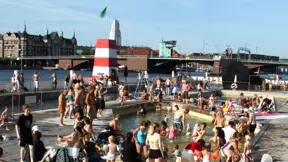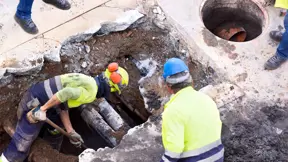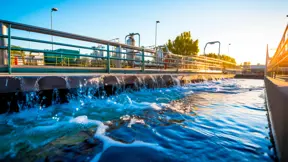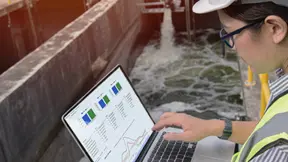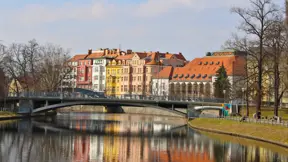
Effective online stormwater quality management in cities
Regional Council in New Zealand benefits from web-based geospatial decision support system
In New Zealand, stormwater runoff from urban catchments often end up in receiving water bodies such as streams, rivers, wetlands, estuaries and exposed ocean coastlines. When stormwater contacts surfaces like impermeable roofs, roads, carparks and so on, it carries significant amounts of contaminants into the receiving waters.
Environment Canterbury wanted to make it easier for local councils to assess the effectiveness of stormwater management options to reduce the impacts on receiving water quality. In collaboration with the University of Canterbury, DHI developed a GIS-based decision support system – ‘MEDUSA Online: Contaminant Loading On-Demand’.
Challenge
Development of effective plans for stormwater quality management to mitigate the degradation of freshwater quality in urban catchments demands an explicit understanding of the catchment both spatially and temporally. In order to manage stormwater effectively, Environment Canterbury needed a solution that would help them, and local councils who are responsible for stormwater networks, to quickly and easily identify critical pollution source areas so they can prioritise their efforts and mitigate impact through optimal measures.
Solution
To address the major aspects in managing stormwater quality, DHI developed ‘MEDUSA Online: Contaminant Loading On-Demand’. The web portal allows catchment managers to investigate catchment characteristics, quantify loads from individual surfaces, compute in-stream concentrations in the receiving waters, prioritise sub-catchments and simulate mitigation measures to determine the impact of green infrastructure on contaminant loading and concentration.
The system generates predictions of single-rain-event contaminant loads at the point of runoff from individual surfaces. Users can identify the spatial distribution of contaminants as well as the relative contribution from the different surface types in the catchment at both event and annual timeframes. With the simple interface, users can easily explore the effects of implementing different treatment systems (at source as well as end-of-the-pipe) at any site in the catchment.
Solution components
The solution integrates University of Canterbury’s MEDUSA (Modelled Estimates of Discharges for Urban Stormwater Assessment) engine with MIKE Powered by DHI software MIKE URBAN (now MIKE+). The integrated system estimates the amount of contaminants generated by individual surfaces within the catchment, based on local monitoring of different surface types. Features include the surface-specific load generation component, based on rainfall characteristics and the ability to couple with hydraulic models to translate into instream concentrations.
Client:
Environment Canterbury
Location:
New Zealand
Related SDG(s):
SDG 6: Ensure availability and sustainable management of water and sanitation for all
SDG 11: Make cities and human settlements inclusive, safe, resilient and sustainable
Technology:
Results
- Easy identification of critical source areas for pollutant reduction
- Facilitates optimal siting of low impact development (LID) measures in urban catchments
- Results are readily accessible online to a wide range of stakeholders
‘The solution allows us to evaluate which localised areas or hotspots in a catchment should be focused on to gain the biggest environmental outcome, and it also gives us a greater understanding of the level of contaminant removal we need from treatment systems or management scenarios to meet water quality outcomes for the catchment. The team has been great to work with and receptive to our ideas, and the tool is simple to navigate with easy to interpret visual display.’
Michele Stevenson, Senior Scientist – Water Quality and Ecology
Environment Canterbury
About our client
Environment Canterbury (Canterbury Regional Council) is geographically New Zealand’s largest regional authority situated in the middle of the South Island, New Zealand. They work in partnership with the community to promote sustainable development in the Canterbury region.
You may also like
How can we help?
With our global network of offices, we make sure you get the right answers to your local needs. Tell us about your water challenges and we will get back to you.
